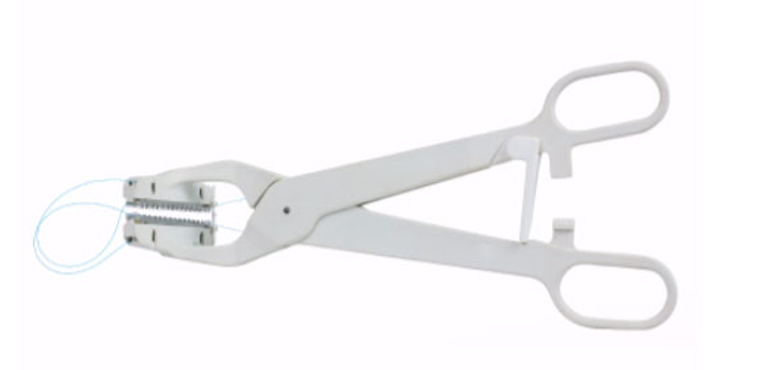Surgical sutures are used for controlled and healthy wound healing.During wound repair,tissue integrity is provided by tissue access maintained by sutures. Suture care after surgery is an important factor in determining the success of the healing process.After applying sutures,the following list should be considered to minimize problems.
- Take medicines recommended by your doctor.
- Alcoholic beverages should not be consumed while taking pain medication
- The wound area should be checked daily.
- Sutures should not be scratched.

- Unless otherwise stated, wounds should be kept as clean and dry as possible.The wound should not be washed and should avoid contact with water.
- The bandage should not be removed from the wound for the first 24 hours.Afterwards,shower if the wound remains dry.
- After the first day, the bandage should be removed and the wound area should be cleaned carefully with soap and water.Twice daily wound cleaning should prevent debris from accumulating and sutures can be removed more easily.
Side Effects
Consult your doctor or your health clinic if the bleeding does not stop,the wound is more than 6 mm deep, and is in a vulnerable or cosmetically important area, such as the eye area,oral area,or genitals.All wounds and stitched areas can result in scarring.In these cases,a plastic surgeon may need to be consulted for special suturing techniques to reduce scarring.
After suturing,the wound and sutures should be checked daily when the bandage is changed.Consult your doctor if you experience the following symptoms.
- Increased pain
- Light pressure does not stop bleeding
- Total or partial paralysis
- Persistent itching,headache,nausea or vomiting
- Swelling and rash lasting for many days
- Bruising
- Fever
- Inflammation or exudate
Terminology for properties of surgical sutures
Sterility
Surgical sutures are sterilized at the end of the manufacturing process.Sutures should protect the sterile barrier system from sterilization to opening of the package in the operating room.
Minimal tissue response
Surgical sutures should not be allergenic,carcinogenic,or harmful in any other way.The biocompatibility of surgical sutures has been proven by several biological tests.
Uniform diameter
Sutures should be the same diameter throughout their length.
Absorbable sutures
These sutures are hydrolyzed by body fluids.During the absorption process,first the suture wound support decreases and then the suture begins to be absorbed.Suture material loses mass/volume over time.
Breaking strength
The ultimate tensile strength at which the suture breaks.
Capillarity
Absorbed fluid can be transferred through the suture along with many unwanted substances and organisms.This is an undesirable condition that can lead to inflammation of the wound.Multifilament sutures have greater capillary action than monofilament sutures.
Elasticity
It is a term that describes the stretching of the suture material by a pulling method, which then restores the suture to its original length when unfastened. Elasticity is a preferred property of sutures.Therefore,after the suture is implanted in the wound,the suture is expected to– holding the two halves of the wound in place by elongating without pressure or cutting the tissue due to wound edema,– After the edema reabsorbs, the wound returns to its original length after contraction.Therefore, it provides maximum wound support.
Liquid absorption
Absorbable sutures are able to absorb fluids.This is an undesired condition that may spread the infection along the suture due to capillary effect.
Tensile strength
It is defined as the force required to break the suture.The tensile strength of the suture decreases after implantation.Tensile strength is related to the diameter of the suture,and as the diameter of the suture increases,the tensile strength also increases.
Tensile strength the weakest point of a suture is the knot.Therefore,the tensile strength of sutures is measured in knotted form.Knotted sutures are 2/3 the strength of straight sutures with the same physical properties.Each knot reduces the tensile strength of the suture by 30% to 40%.
CZ Tensile Strength
It is defined as the force required to break the suture in a linear fashion.
Knot strength
It is defined as the force that can cause the knot to slip.The static friction coefficient and plasticity of the suture material are related to the knot strength.
Memory
It is defined as a suture that cannot change shape easily.Sutures with strong memory, due to their rigidity,tend to return to their coiled form during and after implantation when removed from packaging.Memorable sutures are difficult to implant and have weaker knot security.
Non-absorbable
Suture material cannot be hydrolyzed by body fluids or enzymes.If used on epithelial tissue,it should be removed after the tissue has healed.
Plasticity
It is defined as the suture's ability to maintain strength and return to its original length after stretching.Highly malleable sutures do not impede tissue circulation due to wound edema elongating without pressure or cutting tissue.However, sutures that stretch when the wound contracts after edema resorption do not ensure proper approximation of the wound edges.
Flexibility
Ease of use with suture material;ability to adjust knot tension and knot security.
Wound breaking strength
The ultimate tensile strength of a healed wound with wound dehiscence.
Post time: Dec-02-2022





